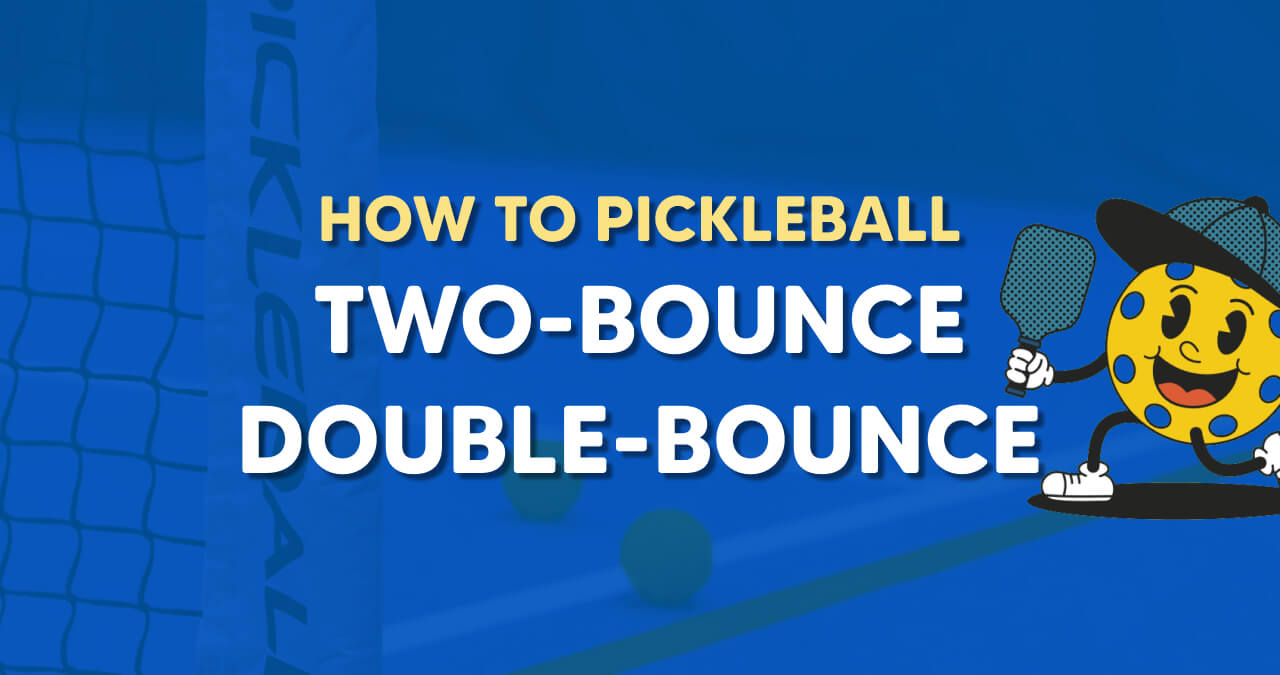In practically every sport that involves handling a ball, you'll encounter a common thread: a rule dictating how many bounces the ball can take.
In pickleball, a sport that is rapidly gaining popularity in Australia, not only is there a two-bounce rule, but there's also a separate double-bounce stipulation.
Are these two terms interchangeable, or do they signify distinct concepts?
Let's delve into the world of pickleball and clarify the differences between the two-bounce rule and the double-bounce rule.
Distinguishing the Two-Bounce Rule and Double-Bounce Rule
It's true that both the two-bounce rule and the double-bounce rule share a numerical similarity of two, but aside from that, they have disparate definitions and serve separate purposes within pickleball.
- Two-Bounce Rule: The two-bounce rule in pickleball mandates that the ball must bounce once on each side of the court after being served. This rule prevents immediate volleying, requiring the receiving team to let the ball bounce before returning, and the serving team to allow the return to bounce before hitting it back. This sequence is applicable for the first three shots of a rally.
- Double-Bounce Rule: On the other hand, the double-bounce rule pertains to a fault where the ball bounces twice on the same side of the court during a rally. This rule is enforced throughout the entire game, not just the first three shots. Despite the apparent distinction, the historical context has caused confusion, and many still refer to the two-bounce rule as the double-bounce rule.
This naming dilemma stems from the fact that, until 2018, the two-bounce rule was known as the double-bounce rule. This historical context sometimes muddies the waters and leads to the interchangeability of terms.
Comparing the Concepts in Detail
- Double Bounce in Pickleball: A double bounce occurs when the ball bounces twice on one side of the court before being hit back. This results in a fault, making the ball dead. Similar rules are found in various racquet and paddle sports.
- Two-Bounce Rule in Pickleball: The two-bounce rule applies during the first three shots of a rally. The serving team must let the ball bounce once before returning, and the receiving team must then return the ball after its first bounce. Only after the third shot can either team engage in volleying.
The Role of the Two-Bounce Rule and Double-Bounce Rule
Understanding the purpose behind these rules sheds light on their necessity within pickleball:
- Two-Bounce Rule: The two-bounce rule aims to level the playing field by restricting immediate serve and volley advantages. It ensures that the serving and returning teams must adhere to bounce requirements, preventing the exploitation of this strategy in the initial shots of a rally. This rule contributes to more extended and engaging rallies.
- Double-Bounce Rule: This rule prevents prolonged rallies from overuse and excessive exploitation of consecutive bounces on the same side. The double-bounce fault instantly renders the ball dead, preserving the balance between both sides and sustaining the dynamics of the game.
Dispelling Confusion: The Key Takeaway
While the two-bounce rule and double-bounce rule are related by historical context and numerical similarity, they pertain to distinct aspects of pickleball. It's crucial to differentiate between these terms to ensure accurate communication on the court. When players use the term double-bounce rule, they might be referring to either the historical name of the two-bounce rule or the fault where the ball bounces twice on the same side. Context plays a significant role in correctly interpreting their intended meaning. So, whether you're discussing the two-bounce rule's historical name or referring to the actual double-bounce fault, you now have a clearer understanding of the unique concepts embedded within these seemingly interchangeable terms in the world of pickleball. And remember, for comprehensive pickleball insights, skill enhancement, and a vibrant community, make sure to check out "Picklepals," the premier pickleball platform in Australia, connecting enthusiasts and players alike!
